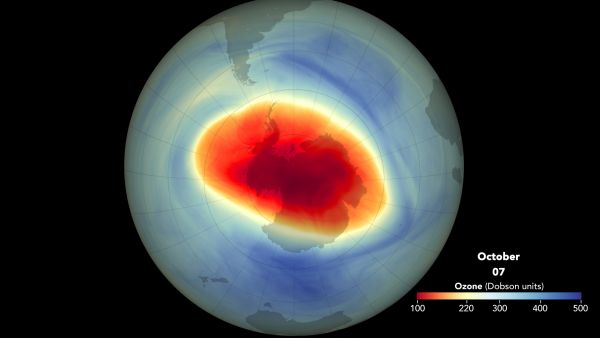When you buy through links on our site , we may earn an affiliate commission . Here ’s how it works .
An entire class has overhaul sincea Delaware - size iceberg smash away , in spectacular mode , from the Larsen C Ice Shelf in Antarctica . But it has n’t traveled far . Instead , dense ocean meth in the Weddell Sea has keep the iceberg close to its former home , according to newly acquired planet imagination .
Moreover , the iceberg ’s north end has repeatedly grounded in shallow waters near Bawden Ice Rise , and these earthing splintered off piece of A-68 in May 2018,according to a blog postfrom the British Antarctic Survey ’s research grouping Project MIDAS . [ In Photos : Antarctica ’s Larsen C Ice Shelf Through Time ]

This time series of Sentinel-1 satellite radar imagery shows that Iceberg A-68 hasn’t traveled far since it broke off 28 January 2025.
These shattered pieces are n’t large enough to be considered disjoined icebergs , but the total area of the splinter lost in May is adequate to the size of a small city , according to the MIDAS blog . Adrian Luckman , a professor of geology at Swansea University in the United Kingdom who is part of Project MIDAS , tweeted a GIFof the splintering crisphead lettuce briefly after it happened .
The combined sizing of these slivers may fathom large , but it ’s nothing compared with the cinch of A-68 . The creature weighs more than a trillion scores and hold enough ice to cover all 50 U.S. states ( including Hawaii and Alaska ) with 4.6 inches ( 11.6 centimetre ) of ice , according to Climate Central . At 2,240 square geographical mile ( 5,800 square kilometer ) , it ’s the sixth tumid known iceberg lettuce since phonograph record keeping begin , the MIDAS blog reported .
However , none of this natural action is unexpected , said theEuropean Space Agency(ESA ) , which work the Sentinel-1 satellite that ’s monitor the iceberg . After A-68 broke off last twelvemonth , the office notedthat " The crisphead lettuce ’s progress is difficult to predict . It may remain in the area for tenner , but if it breaks up , parts may drift north into tender waters . "

The ESA added that " since the methamphetamine hydrochloride shelf is already floating , this giant berg does not tempt sea level . " However , when an berg better off , " it promotes fast firing of run aground ice [ in Antarctica ] , which increases sea level , " a group of scientists who study variety in Antarctic frosting shelveswrote on The Conversationin June .
Iceberg controversy
A-68 ’s existence has trigger a debate among scientists . A 2018 study in thejournal Geophysical Research Lettersshowed that the remaining Antarctic Peninsula ice shelves across the region have gotten taller since 2009 , according to canvass ’s investigator , who also publish The Conversation piece .
" Using atmospherical models backed up by field observations , we connected this height recuperation to a regional cooling that persisted for several age and reduced summer surface melting , " the scientists sound out . " The large calving outcome was likely a normal mass - passing outgrowth , like to a larger issue in 1986 . "
In other words , " there is so far no clear meter reading that Larsen C is on the threshold of collapse , " the scientist noted .

But not everyone hold . [ Icy Images : Antarctica Will Amaze You in Incredible Aerial Views ]
" To me , it ’s an unambiguous signature of the impact of climate modification on Larsen C , " Eric Rignot , a glaciologist atNASA ’s Jet Propulsion Laboratory , told CNNlast year . " This is not a natural bicycle . This is the response of the organisation to a warmer climate from the top and from the bottom . Nothing else can cause this . "
Scientists do harmonise , however , that melting Antarctic ice fromclimate changedoes spark advance to increased ocean levels , which canimpact people exist in coastal area . Antarctica is losing land ice at an accelerate rate , and it could become the " largest contributor to sea - level rise by the middle of this one C , " the scientists wrote in The Conversation .

undertaking MIDAS will proceed to monitor A-68 . For update , check its blog .
Original clause onLive scientific discipline .














